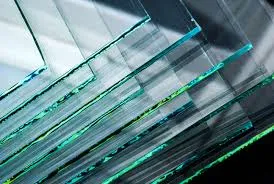Understanding Tempered Glass Varieties Properties and Applications
Tempered glass, also known as toughened glass, is a type of safety glass that has been treated through a process of extreme heating and cooling to increase its strength compared to normal glass. This process not only enhances its durability but also ensures that when it breaks, it shatters into small, blunt pieces rather than sharp shards, reducing the risk of injury. There are several varieties of tempered glass, each tailored for specific applications and environments.
1. Types of Tempered Glass
a. Heat-Soaked Tempered Glass
This variety undergoes an additional heat soak test to eliminate the risk of spontaneous breakage caused by nickel sulfide inclusions. During manufacturing, the glass is held at a high temperature for an extended period. This process detects and eliminates weak points, making heat-soaked tempered glass highly reliable for safety applications such as facades and skylights in commercial buildings.
b. Laminated Tempered Glass
Laminated tempered glass consists of two or more layers of tempered glass bonded together with a layer of polyvinyl butyral (PVB). This configuration provides enhanced sound insulation and UV protection while preventing shattering. In the event of breakage, the glass fragments adhere to the PVB layer, which maintains the overall integrity of the structure. This variety is commonly used in automobiles, glass doors, and windows in high-traffic areas.
c. Low-iron Tempered Glass
Low-iron tempered glass features a reduced iron content, resulting in greater clarity and transparency. This aesthetic quality makes it the preferred choice for applications where visual appearance is paramount, such as glass facades, shower enclosures, and display cases. Its clear finish allows for optimal light transmission, making spaces feel more open and inviting.
d. Reflective Tempered Glass
Reflective tempered glass is coated with a thin layer of metal oxide, allowing it to reflect heat and light. This property makes it desirable for energy-efficient buildings, as it helps to regulate indoor temperatures and reduce cooling costs. Reflective glass is commonly used in commercial buildings, skyscrapers, and other structures where glare reduction and energy efficiency are priorities.
2. Key Properties of Tempered Glass
The primary reason for the widespread use of tempered glass is its impressive physical properties
- Strength Tempered glass is five to ten times stronger than regular glass, making it resistant to impacts and everyday wear and tear.
- Thermal Resistance The tempering process allows the glass to withstand high temperatures and sudden changes in temperature, making it suitable for fireplaces, oven doors, and other applications exposed to extreme heat.
tempered glass varieties
- Safety As previously mentioned, when shattered, tempered glass breaks into small, dull pieces that minimize the risk of injury, making it suitable for a variety of residential and commercial settings.
3. Applications of Tempered Glass
The versatility of tempered glass lends itself to numerous applications
- Architecture and Construction It is widely used in building facades, windows, doors, and shower enclosures due to its strength and safety features.
- Automotive Industry Tempered glass is commonly found in vehicle side windows, windshields, and rear windows due to its durability and ability to withstand external forces.
- Furniture Design With its sleek appearance and safety features, tempered glass is utilized in tabletops, shelving, and display cases in both residential and commercial furniture design.
- Electronics and Screens Tempered glass is also used in screens for smartphones, tablets, and other electronic devices to provide added protection against scratches and impacts.
Conclusion
Tempered glass varieties offer a unique combination of strength, safety, and aesthetic appeal, making them an ideal choice for a wide range of applications. Whether in a modern skyscraper, a vintage car, or a minimalist living space, the various forms of tempered glass help to enhance design while ensuring durability and safety. As technology continues to advance, we can expect to see further innovations in the tempered glass industry, expanding its versatility and applications even more.
 Afrikaans
Afrikaans  Albanian
Albanian  Amharic
Amharic  Arabic
Arabic  Armenian
Armenian  Azerbaijani
Azerbaijani  Basque
Basque  Belarusian
Belarusian  Bengali
Bengali  Bosnian
Bosnian  Bulgarian
Bulgarian  Catalan
Catalan  Cebuano
Cebuano  Corsican
Corsican  Croatian
Croatian  Czech
Czech  Danish
Danish  Dutch
Dutch  English
English  Esperanto
Esperanto  Estonian
Estonian  Finnish
Finnish  French
French  Frisian
Frisian  Galician
Galician  Georgian
Georgian  German
German  Greek
Greek  Gujarati
Gujarati  Haitian Creole
Haitian Creole  hausa
hausa  hawaiian
hawaiian  Hebrew
Hebrew  Hindi
Hindi  Miao
Miao  Hungarian
Hungarian  Icelandic
Icelandic  igbo
igbo  Indonesian
Indonesian  irish
irish  Italian
Italian  Japanese
Japanese  Javanese
Javanese  Kannada
Kannada  kazakh
kazakh  Khmer
Khmer  Rwandese
Rwandese  Korean
Korean  Kurdish
Kurdish  Kyrgyz
Kyrgyz  Lao
Lao  Latin
Latin  Latvian
Latvian  Lithuanian
Lithuanian  Luxembourgish
Luxembourgish  Macedonian
Macedonian  Malgashi
Malgashi  Malay
Malay  Malayalam
Malayalam  Maltese
Maltese  Maori
Maori  Marathi
Marathi  Mongolian
Mongolian  Myanmar
Myanmar  Nepali
Nepali  Norwegian
Norwegian  Norwegian
Norwegian  Occitan
Occitan  Pashto
Pashto  Persian
Persian  Polish
Polish  Portuguese
Portuguese  Punjabi
Punjabi  Romanian
Romanian  Russian
Russian  Samoan
Samoan  Scottish Gaelic
Scottish Gaelic  Serbian
Serbian  Sesotho
Sesotho  Shona
Shona  Sindhi
Sindhi  Sinhala
Sinhala  Slovak
Slovak  Slovenian
Slovenian  Somali
Somali  Spanish
Spanish  Sundanese
Sundanese  Swahili
Swahili  Swedish
Swedish  Tagalog
Tagalog  Tajik
Tajik  Tamil
Tamil  Tatar
Tatar  Telugu
Telugu  Thai
Thai  Turkish
Turkish  Turkmen
Turkmen  Ukrainian
Ukrainian  Urdu
Urdu  Uighur
Uighur  Uzbek
Uzbek  Vietnamese
Vietnamese  Welsh
Welsh  Bantu
Bantu  Yiddish
Yiddish  Yoruba
Yoruba  Zulu
Zulu 

